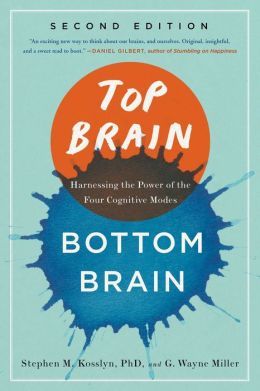

Purchase
April 2015
On Sale: March 31, 2015
240 pages
ISBN: 1451645112
EAN: 9781451645118
Kindle: B00BSAZ4VG
Paperback / e-Book
Add to Wish List
Non-Fiction
One of the world’s leading neuroscientists teams up with an
accomplished writer to debunk the popular
left-brain/right-brain theory and offer an exciting new way
of thinking about our minds. The revised second edition,
with expanded practical applications, highlights how readers
can harness the theory to succeed in their own lives. For the past fifty years, popular culture has led us to
believe in the left-brain vs. right-brain theory of
personality types. Right-brain people, we’ve been told, are
artistic, intuitive, and thoughtful, while left-brain people
tend to be more analytical, logical, and objective. It would
be an illuminating theory if it did not have one major
drawback: It is simply not supported by science. Dr. Stephen M. Kosslyn, who Steven Pinker calls “one of the
world’s great cognitive neuroscientists,” explains with
cowriter G. Wayne Miller an exciting new theory of the
brain. Presenting extensive research in an inviting and
accessible way, Kosslyn and Miller describe how the human
brain uses patterns of thought that can be identified and
understood through four modes of thinking: Mover, Perceiver,
Stimulator, and Adaptor. These ways of thinking and behaving
shape your personality, and with the scientifically
developed test provided in the book, you’ll quickly be able
to determine which mode best defines your own usual style.
Once you’ve identified your usual mode of thought, the
practical applications are limitless, from how you work with
others when you conduct business, to your personal
relationships, to your voyage of self-discovery.
Comments
No comments posted.
Registered users may leave comments.
Log in or register now!
| 


 © 2003-2024 off-the-edge.net
all rights reserved Privacy Policy
© 2003-2024 off-the-edge.net
all rights reserved Privacy Policy